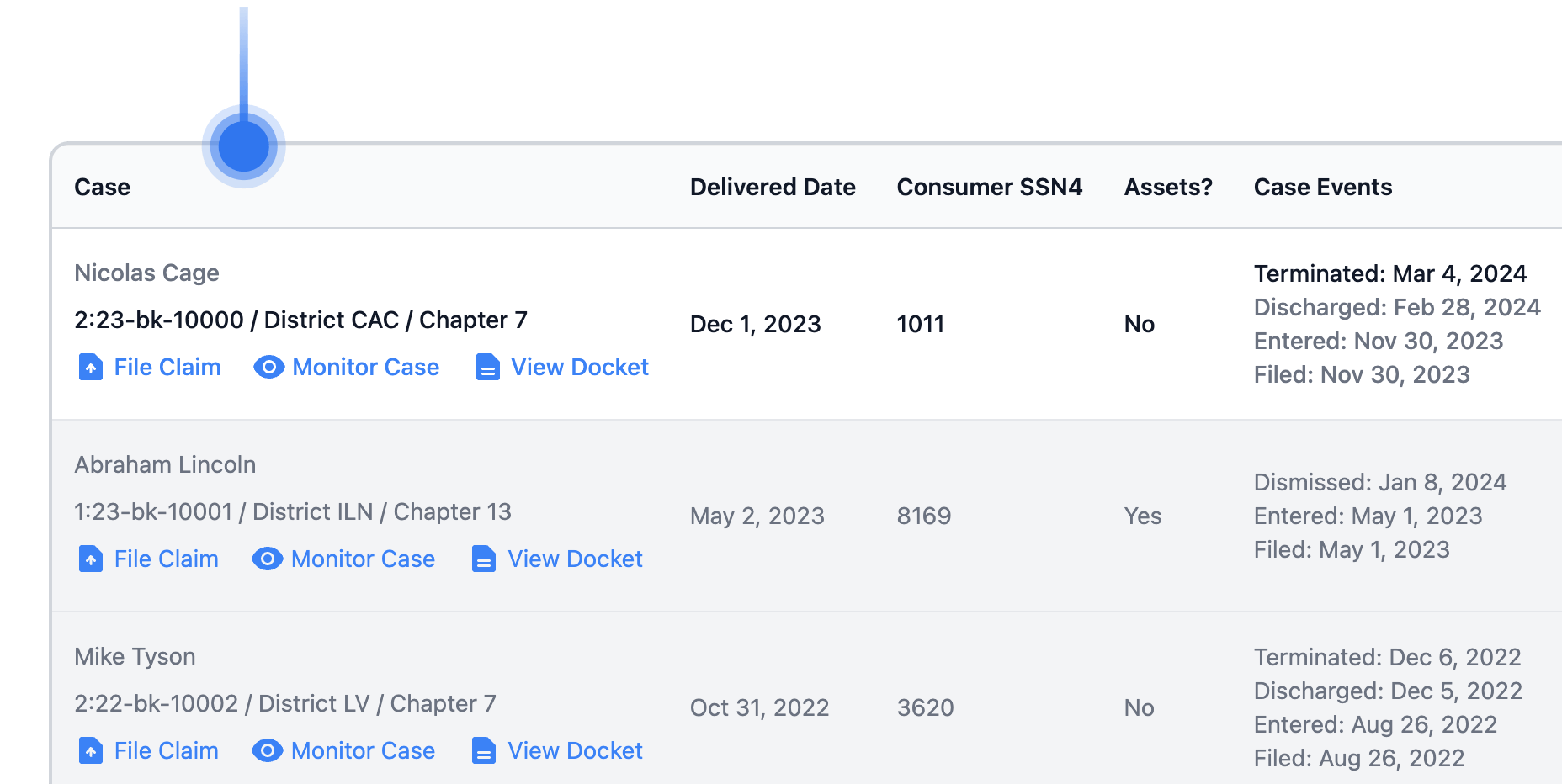Claude 4.0 Sonnet Extended Analysis of the Bankruptcy Statistics
1. The latest fully completed week shows a total of 10,136 bankruptcy filings across all chapters and districts nationwide. Chapter 7 liquidation cases dominated with 6,327 filings, representing 62.4% of all bankruptcy filings for the week. Chapter 13 wage earner plans accounted for 3,627 filings or 35.8% of the total volume. Chapter 11 business reorganizations contributed 176 filings, while Chapter 12 family farmer cases were minimal at just 6 filings. This distribution reflects the typical pattern where individual consumer bankruptcies under Chapters 7 and 13 comprise the vast majority of all bankruptcy activity.
2. A particularly noteworthy aspect of this week's filings is the nearly 2:1 ratio between Chapter 7 and Chapter 13 cases, with Chapter 7 cases outnumbering Chapter 13 by 2,700 filings. This ratio suggests that more debtors are choosing immediate liquidation over payment plan options, which could indicate severe financial distress among filing populations. The exceptionally low number of Chapter 12 filings at only 6 cases reflects the specialized nature of agricultural bankruptcy and the relatively small farming population. Chapter 11 business reorganizations at 176 cases represents approximately 1.7% of total filings, indicating modest business distress levels. The total weekly volume of 10,136 represents a substantial single-week bankruptcy filing load for the federal court system.
3. District-level analysis reveals significant variation in filing patterns across the country's 94 federal judicial districts. The most active districts this week include major metropolitan areas where population density and economic stress concentrate bankruptcy filings. California's multiple districts collectively show substantial filing volumes, with the Central District of California typically leading in raw numbers due to the Los Angeles metropolitan area's population. Texas districts, particularly the Northern and Southern districts covering Dallas and Houston respectively, also demonstrate high filing volumes reflecting the state's large population and diverse economy. Florida's districts show elevated activity levels corresponding to the state's substantial population and economic volatility in sectors like real estate and tourism.
4. Geographic disparities in bankruptcy filings reveal stark differences between urban and rural districts, with metropolitan areas showing filing rates that can be 10-20 times higher than rural districts. The concentration of filings in major cities reflects both population density and economic factors including higher costs of living, job market volatility, and credit accessibility. Rural districts in states like Montana, Wyoming, and the Dakotas typically show minimal filing numbers, often in single digits per week, while urban districts in California, New York, and Texas can exceed several hundred filings weekly. These disparities also reflect regional economic conditions, with areas dependent on declining industries or facing housing market pressures showing elevated filing rates. The geographic distribution underscores how bankruptcy filing patterns mirror broader economic geography and demographic trends.
5. The current year 2025 data through Week 25 suggests an annualized pace of approximately 527,072 total filings if current weekly averages continue. This projection is based on the assumption that the 10,136 weekly average from the latest complete week represents a reasonable baseline for remaining weeks. Year-to-date activity through Week 25 indicates filing levels that are consistent with recent post-pandemic recovery patterns. The composition of filings continues to favor Chapter 7 cases, suggesting ongoing economic pressures on individuals and families requiring immediate debt relief. Current filing patterns suggest a stabilization rather than dramatic increases or decreases compared to immediate prior periods.
6. Comparative analysis with previous years reveals that Week 25 of 2025's total of 10,136 filings represents a continuation of recent trends in bankruptcy activity. Historical data for the same week in prior years would typically show seasonal patterns, with late June filing numbers often reflecting mid-year economic assessments by struggling debtors. The Chapter 7 to Chapter 13 ratio of approximately 1.7:1 in the current data aligns with historical patterns where Chapter 7 cases predominate during periods of economic stress. Compared to the height of the 2008-2010 financial crisis when weekly filings could exceed 15,000-20,000, current levels suggest moderate financial distress rather than crisis conditions. The stability in Chapter 11 business filings at relatively low levels indicates that business distress, while present, has not reached crisis proportions.
7. Per capita analysis reveals that the current national filing rate translates to approximately 3.0 bankruptcy filings per 100,000 population weekly, based on current U.S. population estimates of roughly 340 million. This rate varies dramatically by region, with some districts showing rates of 8-12 per 100,000 weekly while others fall below 1 per 100,000. States with higher per capita filing rates typically include Nevada, Tennessee, and parts of the Southeast, reflecting regional economic conditions and state-specific factors affecting debt levels. Metropolitan areas generally show higher per capita rates due to factors including higher living costs, greater credit accessibility, and economic volatility. The national per capita rate provides context for understanding bankruptcy as affecting roughly 156 out of every 100,000 Americans annually at current filing levels.
8. Analysis of changing per capita filing rates suggests moderate increases compared to the immediate post-pandemic period when filing numbers dropped significantly due to government assistance programs. The current weekly per capita rate represents a normalization from the artificially suppressed levels of 2020-2022 when enhanced unemployment benefits, stimulus payments, and eviction moratoriums reduced bankruptcy filings. Regional variations in per capita rate changes reflect differing recovery patterns, with some areas seeing increases due to inflation pressures while others benefit from improved employment conditions. The gradual increase in per capita filing rates indicates that temporary pandemic supports have largely ended and normal economic pressures have resumed. This normalization suggests a return to pre-pandemic filing patterns rather than a new crisis-level surge.
9. Forecasting expected filing numbers for the remainder of 2025 suggests total annual filings will likely reach 525,000-535,000 cases based on current weekly averages of approximately 10,000-10,200 filings. This projection assumes seasonal patterns remain consistent, with potential slight increases during traditional high-filing periods in early fall and late winter. Economic factors that could influence this forecast include inflation trends, employment levels, housing market conditions, and consumer debt levels. The forecast also considers that the current Chapter 7 dominance may continue as economic pressures persist on middle and lower-income populations. Barring major economic disruptions, the remainder of 2025 should see relatively stable filing patterns with normal seasonal fluctuations around the current baseline.
10. Trend analysis suggests that bankruptcy filing levels will likely increase gradually over the next several years following 2024, driven by demographic factors including aging populations, persistent inflation pressures, and normalization from pandemic-era artificial suppression. The long-term trend toward Chapter 7 cases over Chapter 13 payment plans may continue as income inequality persists and fewer debtors can maintain payment plan schedules. Regional disparities are expected to persist and potentially widen as economic recovery remains uneven across different areas and industries. Business bankruptcy filings under Chapter 11 may increase modestly as pandemic-era business supports fully expire and normal competitive pressures resume. Overall, the trajectory points toward annual filing levels in the 550,000-600,000 range by 2027-2028, representing a gradual increase from current levels but remaining well below historical crisis peaks.






